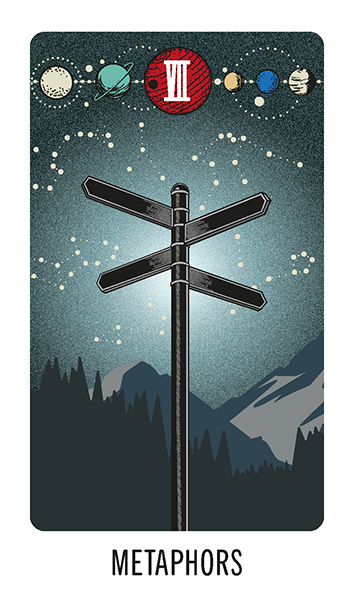Metaphors
Metaphors are how we make sense of the world.
Metaphors are the key to how we make meaning, how we make sense of ourselves and our experiences. As well as helping us make sense of ourselves, metaphors can help us convince others of who we are. In his book The Transsexual Phenomenon, Harry Benjamin writes that “souls are “trapped” in the wrong bodies”.
In The Empire Strikes Back: a Posttransexual Manifesto, Sandy Stone writes –
When the first clinics were constituted, Benjamin’s book was the standard reference. And when the first transsexuals were evaluated for their suitability for surgery, their behavior matched up gratifyingly with Benjamin’s criteria. The researchers produced papers which reported on this, and which were used as bases for funding. It took a surprisingly long time–several years–for the researchers to realize that the reason the candidates’ behavioral profiles matched Benjamin’s so well was that the candidates, too, had read Benjamin’s book, which was passed from hand to hand within the transsexual community, and they were only too happy to provide the behavior that led to acceptance for surgery.
in other words, we were given this metaphor as a way of describing being trans that would convince others.
Janet Mock writes –
“Trapped in the wrong body” is a convenient, lazy explanation but it fails to describe trans people & our bodies every time.
Monroe Bergdorf said –
I’ve come to understand why the phrase ‘born in the wrong body’ is unhelpful to me. I know why I used to use it; because other people struggled to understand, but looking back I know it did me harm. Saying you have the wrong body feels like a kind of self-abuse, and it’s not the same as saying ‘I need to adjust my body to be my true self’. That’s a different thing. We only get one body and it’s really important, especially for younger people to know they are unique and beautiful. I would say to younger people that transitioning is hard so you need to look after your body, love it and respect it.
So what other metaphors can we use to make sense of being trans? Metaphors are created by society, our families, our cultures. They can be helpful but overuse can make them restrictive.
More recently people have used metaphors such as the genderbread person or galaxies. Do these sets of meanings work for you? How about circles? ending up where you started from? Seasonal changes, light into dark, dark into light. The Wizard of Oz – finding out you were always home all along, but had to travel to find that.
The metaphors we use to explain and describe our genders and genderedness create certain ways forward. For instance the born in the wrong body metaphor creates the idea that one must change their body to make it ‘right’. If we think about being trans and transition as a journey, then we create the idea that we might someday ‘arrive’ somewhere and that we have had to leave where we are in some way. Metaphors offer different possiblities for our bodies, our experience of time, and how we understand transness.
What different metaphors have you used for your gender or your transition along the way? Which might you like to use?
Kate Bornstein offers us the metaphor of gender as a play ground …
When gender is a binary, it’s a battlefield. When you get rid of the binary, gender becomes a playground. All kinds of ways of looking at gender can peacefully coexist. Of course, there are playground bullies. But whereas the activism of any kind of binary politic is struggle, and opposition, and gaining ground at the expense of someone else, the activism of a playground is cooperation and coalition.
Kate Bornstein, from https://aperture.org/editorial/gender-playground/
QUESTIONS TO PONDER
Using the metaphor of the playground… what are the elements of gender that you most want to play with?
What wild rides can gender offer you right now?
What are the swings and what are the roundabouts of your gender at the moment?

